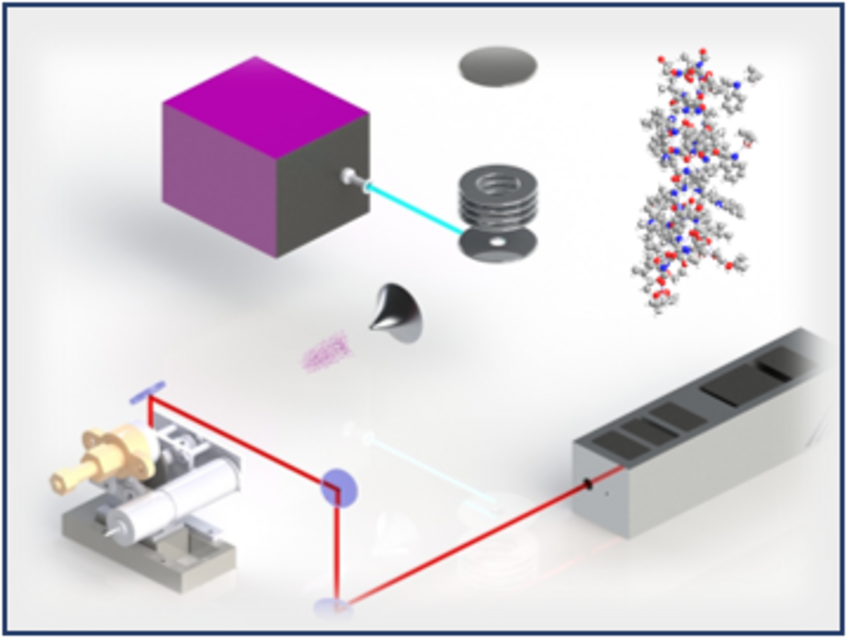ns-Laser injection of biomolecules into a cold gas jet

ns-Laser injection of biomolecules into a cold gas jet
The volatilization of complex molecules requires a lot of energy, which may destroy the molecules before they desorb. This is why evaporating peptides, proteins and DNA is almost as hard as launching an egg by boiling it.
However, pulsed desorption using nanosecond laser pulses in the mJ energy range allow us to heat the molecules at the enormous rate of up to 1011 K/s. This is high enough to desorb intact single neutral amino acids, nucleotides or polypeptides.
At QNP, and in collaboration with our colleagues at the University of Basel, we are exploring the mass and complexity limit of desorpbing neutral polypeptides and proteins in high vacuum. The verification of intact volatilization is based on VUV postionization and other means mass spectrometry.
Microhydrated biomolecules
Microhydrated biomolecules
Biomolecules are natively found in aqueous soulutions, but quantum optics experiments require the isolation of a particle from its environment.
However we can mimick a biological environment by packing a biomolecule into a 'space suit', a microhydration shell that helps the molecule-water complex to approach a structural arrangement similar to a form it has in solution.
Using nanosecond laser desorption into moist noble gas jets, we have prepared supersonic sources of polypeptide antibiotics, such as indolicidin or gramicidin, that were dressed with up to 20 water molecules.
References:
- P. Geyer, U. Sezer, J. Rodewald, L. Mairhofer, N. Dörre, P. Haslinger, S. Eibenberger, C. Brand, M. Arndt, Perspectives for quantum interference with biomolecules and biomolecular clusters,
Physica Scripta: 91, (2016).
